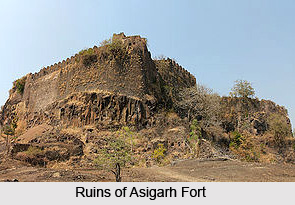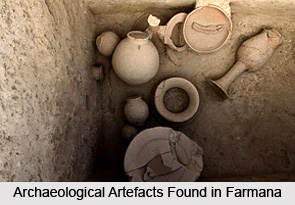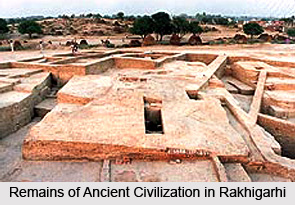 Archaeological sites in Haryana have revealed interesting facts about the culture and lifestyle of ancient civilizations. Most of the sites in the state are associated with Indus Valley Civilization and give clear idea about their commendably developed society. Remains of township and other articles have been excavated at different places which also help in tracing the course of development of old civilizations along with their decline. Various forts, temples, palaces and burials narrate numerous concealed aspects of Indian history.
Archaeological sites in Haryana have revealed interesting facts about the culture and lifestyle of ancient civilizations. Most of the sites in the state are associated with Indus Valley Civilization and give clear idea about their commendably developed society. Remains of township and other articles have been excavated at different places which also help in tracing the course of development of old civilizations along with their decline. Various forts, temples, palaces and burials narrate numerous concealed aspects of Indian history.
Asigarh Fort
Asigarh fort stands in Hansi town of Haryana. Archaeological Survey of India (ASI) has declared it as a centrally protected monument. The fort is however in ruins and has transformed into a mound with a pillar like structure having a roof. It was constructed in 12th century by Prithviraj Chauhan. In ancient times, the fort was famed as one of the most impregnable forts of India. Carvings have been found on its wall, which have Hindu origin.
Balu
Balu is an important archaeological site of Haryana which have been found to be associated with Indus Valley Civilisation. A number of plant remains have been found in the region.
Banawali
Banawali, situated in Fatehabad district, has also been recognized as the site of Indus Valley Civilisation. Excavations have revealed the remains of a well constructed fort town belonging to Harappan civilization. Several other artefacts have also been discovered which includes painted earthen pots, tandoors, cooking vessels, Harappan seals, gold beads, bangles of shells and many more.
 Bhirrana
Bhirrana
Bhirrana, located in Fatehabad district, is a small village where excavations have furnished artefacts belonging to 7380 BC. Articles of different civilizations have been found here namely Hakra Wares culture, early Harappan culture and mature Harappan culture. Interesting findings of Bhirrana include figurines of deities resembling mermaids and dancing girls, terrecotta wheels, chullah in kitchen, charred bone remains of a bovine animal and others.
Farmana
Farmana, in Rohtak district, is another archaeological site which has furnished a burial site belonging to mature Harappan period. Apart from this, evidences of habitation site have also been found here with houses bordering a well laid out road. The findings have provided a clear idea of the culture prevailing in ancient time. It has been deciphered that inter-regional marriage was common among Harappans which helped in the augmentation of trade.
Firoz Shah Palace Complex
Firoz Shah Palace Complex is located in Hisar city. It was established in 1354 AD by Firoz Shah Tughlaq. Archaeological Survey of India has declared it as a centrally protected monument. Architecture of the complex is adorned with Indian and Islamic architecture. Red sandstone which structured the temple is believed to have taken from the ruined Hindu temples.
Jognakhera
 Jognakhera, in Kurukshetra district, is another significant archaeological site associated with Indus Valley Civilisation. Copper smelting furnaces along with copper slag have been recovered from Jognakhera.
Jognakhera, in Kurukshetra district, is another significant archaeological site associated with Indus Valley Civilisation. Copper smelting furnaces along with copper slag have been recovered from Jognakhera.
Kanwari
Kanwari is an ancient village situated in Hisar district. The village was well inhabited during Indus Valley Civilization, Tomara dynasty, Mughal rule, Maratha rule, Jat Sikh rule and British rule in India. The prominent remains of Kanwari comprise an ancient Shiva temple, an Akhara for Sadhus and a temple of village deity `Bua Kanwari`.
Kunal
Kunal is located in Fatehabad district and is found to be a site of a pre Harappan civilization. The place has revealed a small settlement of Hakra ware where the houses were built on artificially elevated platform. Ancient seals have also been recovered.
Rakhigarhi
Archaeological researchers have established Rakhigarhi as a site of Harrapan and pre Harappan civilizations. It is located on the dry bed of River Saraswati, in the district of Hisar. The ancient civilizations of this region possessed paved roads, storage system, large rainwater collection system, drainage system, statue production, terracotta brick and expert metal works. Numerous sorts of jewellery remains have also been found. Rakhigarhi has five mounds out of which only three are available for excavations and the other two are densely populated villages.



















